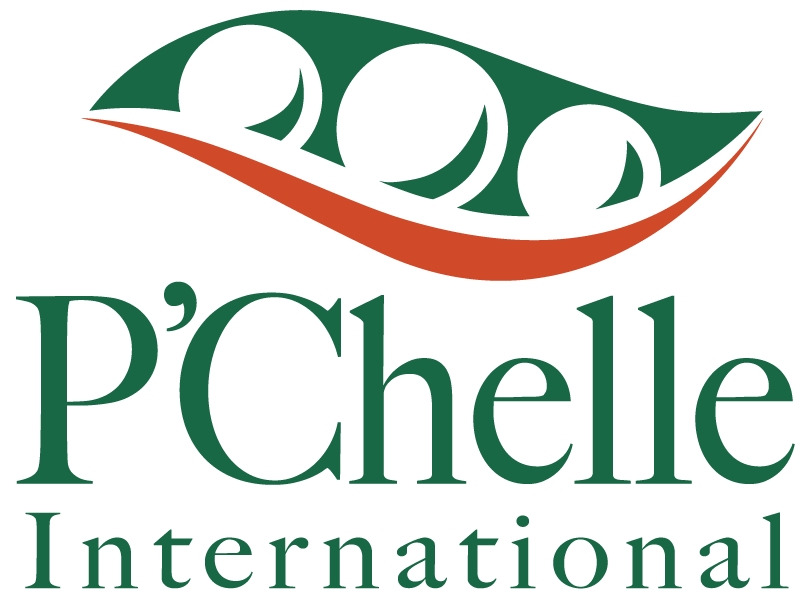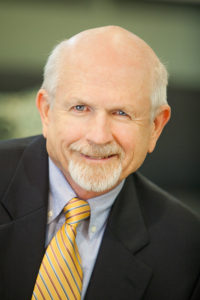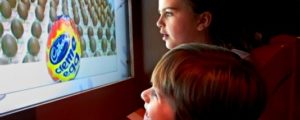01 Feb Cadbury builds their brand with Food Tourism
George, a bachelor, had romantic visions of packing his bags and venturing to Asia to make his fortune in the Himalayan tea business. His brother Richard, married and domesticated, toyed with the idea of being a surveyor, not exciting, but practical. These were back-up plans, just in case this last-gasp effort failed to save the family business.
In 1824 their father John Cadbury started a retail coffee, tea and cocoa business in Birmingham, England. The business prospered, especially cocoa, a novelty from the New World that was gaining popularity as a powdered drink. In 1831 he expanded into cocoa manufacturing. With the passing of his wife Candia to tuberculosis in 1855, John lost, not only his wife, but his zest for life and the business he worked at for over 30 years. In 1861 John turned the now declining operation over to his two sons, George and Richard, hoping their youth and enthusiasm would turn the course.
Nothing worked. Their products were indistinct and tired. New products failed. Funds were evaporating. In that valley of desperation, George struck upon a clear idea of the necessary, but risky step that had to be taken. As a devout Quaker, he surely believed this was a revelation from God. In an age of increased concern over the safety of processed food and beverage products, with adulterated cocoa at the top of the list, the answer seemed to lie in a purer, healthier product, a unique position in a crowded market. But, this involved the purchase of new, expensive machinery imported from Holland and an advertising campaign, something anathema to Quaker business philosophy.
The risk was taken. Cocoa Essence, with the tag line, “Absolutely Pure, Therefore Best,” was launched. The company was saved. Today, Cadbury, a subsidiary of Mondelēz International, is the world’s second largest confectionery brand after Wrigley’s, selling in over 40 countries, generating more than $3 billion in global net revenues in 2016. The courage to take risks and aggressive advertising are ingrained in the company’s culture. Nothing demonstrates this better than Cadbury World.
Cadbury World, at a construction cost of £6 million, opened on August 14, 1990, as a modified rebirth of the original Bournville (Birmingham) factory tours, which ceased in 1969 with the Schweppes merger (now demerged) amid assorted concerns about health, hygiene and safety. Although launched initially as a brand development tool (research showed that experiential marketing has an impact that can last for decades), it has become one of the United Kingdom’s major tourist attractions, welcoming in excess of 500,000 visitors annually and generating a healthy profit.
Cadbury World’s primary attractions are divided into 14 zones, each one dealing with various aspects of cocoa and chocolate, the Cadbury family and the colorful history of this multi-national confectionery business. There is a natural sequence from one zone to the next in this self-guided tour.
Zone #1 Aztec Jungle. Cut through the jungle to discover the origin of cocoa and the native people, their cultures and beliefs, in what is today Mexico, before Hernán Cortés and his band of conquistadores not only changed the New World forever, but also the culinary world.
Zone #2 Journey to Europe. Mini theater presentations feature English society in the 17th and 18th Centuries developing a taste for this humble cocoa bean as it is processed into cocoa beverages and chocolate confectioneries.
Zone #3 Bull Street. One meanders through a full-scale replica of the original street where John Cadbury opened his coffee, tea and cocoa business in 1824, capturing the feel, if not the reality of the Victorian England of Charles Dickens.
Zone #4 Cadbury Story. This is a classic Horatio Alger story of purpose, commitment, risk, faith, overcoming adversity and eventually embracing unimagined success. It is an inspiring story, not only for its business success, but also for what has been termed, “Quaker Capitalism.” This ideal of family, puritanical self-denial, strong work ethic, honesty, concern for workers and community encompassed more than thought and theory, but also demanded personal commitment and accountability.
Zone #5 Making Chocolate. The very foundation of the business, the fascinating art of making chocolate is featured in this special-effects cinema presentation. It is a craft that all chocolate connoisseurs will appreciate.
Zone #6 Manufacturing. Now that the visitor has learned about manufacturing chocolate, Cadbury World focuses on manufacturing Cadbury chocolate, by means of interactive video stations presenting how popular Cadbury brands are manufactured, including Creme Egg, Buttons and Roses.
Zone #7 Packaging Plant. This is about as close as one gets to a real-life factory tour. It is a fleeting glimpse of the real Bournville factory in operation as various Cadbury Dairy Milk products move their way along the conveyor belt on their way to markets around the world.
Zone #8 Cadabra. The joy of stepping into a Beanmobile cannot be overstated, unless one can say abracadabra and turn that Beanmobile into a Porsche 911 Carrera. The Beanmobile journey takes one on a Disney like experience through a chocolate wonderland sprinkled with Cadbury magic, appealing especially to the young, or at least, young at heart.
Zone #9 Demonstration Area. Cadbury World chocolatiers demonstrate how chocolate was made before mechanization.
Zone #10 Advertising Avenue. Quaker values defined advertising as vain and prideful. A good product should sell itself without promotion. As mentioned earlier, George Cadbury, during his time of desperation, became a revolutionary, creating a better product and the advertising to sell it. Cadbury advertising, throughout its 180 years plus history has proven to be creative and effective. For anyone captivated by excellent advertising, the examples displayed will delight and inspire.
Zone #11 Purple Planet. This state-of-the-art, interactive experience allows the visitor to play in chocolate rain, grow and care for a cocoa tree, chase a Cadbury Egg and sneak a peek at Cadbury operations worldwide through the technology of an illuminated globe.
Zone #12 World’s Biggest Cadbury Shop. One of the pillars of an Industrial Theme Park, the gift shop, is a tremendous opportunity, turning themed merchandise, growing the brand, while turning a profit, growing the bottom line. Another pillar of an Industrial Theme Park is a dining establishment, that requirement being met next door with, what else, the Cadbury Café.
Zone #13 Essence. Seat-belts should be tightened as the visitor embarks on a 4D cinema whirlwind adventure, complete with motion seats, diving into a bowl of liquid Cadbury Dairy Milk, riding the Crunchie Rollercoaster and flying in a Cadbury Creme Egg airship piloted by the Caramel Bunny, one of many Cadbury characters.
Zone #14 The Bournville Experience. This multi-media attraction sheds light on the Quaker ethics of the Cadbury family and the inspiration and development of Bournville Village.
In 1879, with the company prospering and George and Richard wrestling with their Quaker responsibilities amidst the social ills of the Industrial Revolution, they agreed upon the unconventional idea of moving their factory to a bucolic meadow, four miles southwest of the dirt and grime of Birmingham, in what became known as Bournville.
In 1895 George Cadbury decided to fulfill the dream of his father John nearly 50 years earlier by building a garden city next to the garden factory. Cottages, with enough space for a vegetable garden, were built around a village green, with lawn, trees, walking paths, flower gardens, wide carriageways, parks, tennis courts, playgrounds for the children and below market financing, enabling workers to live in their own homes in a beautiful and healthy rural setting appropriately named Bournville Village.
Success is traditionally a matter of time and place. The Cadburys had both. Birmingham was the place and the Industrial Revolution the time. The city, with its thousands of small workshops representing a wide variety of trades, provided the entrepreneurial ambition, imagination and culture to embrace and profitably develop the many scientific, engineering and economic development ideas of the time.
In 1765 Matthew Boulton opened Soho Manufactory in Birmingham, credited with developing the factory system. In 1776 Boulton teamed up with James Watt to develop the industrial steam engine, powering the Industrial Revolution. By 1791 Birmingham had earned the title of, “the first manufacturing town in the world.” Its manufacturing prominence and reputation carried well into the 20th century.
Today Birmingham, as with much of England, has transitioned from manufacturing to services. Manufacturing still exists, but it doesn’t dominate. The city, with the second largest economy in the United Kingdom, still lays claim as a major jewelry manufacturing center, Jaguar Land Rover has a manufacturing presence and a number of small manufacturers and craft industries are bucking the trend. But, services including public administration, education, health, finance, transportation, retail and tourism now dominate the economy.
Birmingham, nestled along the River Rea, features such internationally acclaimed attractions as the Birmingham Symphony Orchestra, the Birmingham Royal Ballet, the Birmingham Repertory Theatre, the Library of Birmingham, the Barber Institute of Fine Arts and assorted other art, literary, music and culinary attractions. Birmingham is the fourth most visited city in the United Kingdom by foreign visitors.
Cadbury World is a bridge between the Birmingham of yesterday and the Birmingham of today. It is still a major manufacturing company, reflecting on Birmingham’s past, while also a major tourism attraction, reflecting on Birmingham’s present. The question that begs to be asked is why 90% of Cadbury World’s attendance is drawn from within 150 miles of Birmingham when the world is knocking on their door? Whatever the reason, when John Cadbury decided to open a coffee, tea and cocoa business on Bull Street in 1824 it was, without a doubt, Birmingham’s good fortune.
Now Imagine…..If your community is the home of a popular consumer brands manufacturing company, they could act as an anchor in a Food Park, attracting other manufacturing companies with similar products thus creating a Food Cluster. Such a project would create an excellent direct-to-consumer marketing opportunity for the companies and an equally wonderful tourism opportunity for the community.
I want to hear from you! If you have questions or comments regarding Food Clusters or Food Parks, email them to me at gary@pchelle.com.
Sources:
Cadbury’s Purple Reign, The Story Behind Chocolate’s Best-Loved Brand, John Bradley
Cadbury World, A Case Study, An overview of Cadbury World, its origins, history and operations (www.cadburyworld.co.uk)
Chocolate Wars, Deborah Cadbury
Iron, Steam & Money, The Making of THE INDUSTRIAL REVOLUTION, Roger Osborne





No Comments